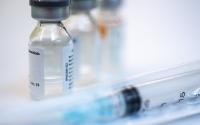[ad_1]
Only 3.7% of COVID-19 cases at 17 in-person K-12 schools in Wood County, Wisconsin, were tied to in-school transmission, and incidence was 37% lower than that in the surround community, according to a study published yesterday in the Morbidity and Mortality Weekly Report (MMWR).
In a commentary in JAMA on the topic, experts from the Centers for Disease Control and Prevention (CDC) give recommendations for safe reopening in US schools.
Table of Contents
In-school transmission uncommon
The study, led by a physician from Aspirus Doctors Clinic in Wisconsin Rapids, used school and public health records to identify 191 COVID-19 cases in 4,876 students and 654 staff across five rural school districts.
Only 7 of the 191 cases (3.7%), all of them in students, were linked to in-school transmission. Five of the cases occurred at elementary schools (3 in a single class), and 2 were associated with secondary schools. No staff member infections were tied to in-school spread.
Overall coronavirus incidence in the schools was 3,453 per 100,000, 37% lower than the 5,466 in the surrounding community, during the study period of Aug 31 to Nov 29, 2020. The community saw test positivity rates for SARS-CoV-2, the virus that causes COVID-19, of 7% to 40% during that time. In addition to the 133 students and 58 staff members identified at the schools, 3,393 community members were reported to have COVID-19 infections during the study period.
“Although asymptomatic transmission is possible, this study demonstrated that, with precautions in place, in-school transmission of SARS-CoV-2 appeared to be uncommon in this rural Wisconsin community, despite up to a 40% positive SARS-CoV-2 test rate in the surrounding county,” the authors said.
Mitigation measures and compliance
All students and staff at all schools were required to wear face coverings indoors and when within 6 feet of another person outdoors; the reported compliance rate among students ranged from 92.1% to 97.4%, regardless of age.
Student cohorts were limited to 20. No COVID-19 screenings were done at the schools or in the community. If a student was excluded from in-person school because of coronavirus symptoms, the student’s siblings and any close school contacts also had to stay home.
Participating schools included eight K-6 schools, with 1,529 students attending in person, while nine were secondary schools (grades 7 to 12), with 3,347 onsite students. Another roughly 12.4% of children received remote instruction. Of the school districts, three were public, one was private, and one was independent.
The authors said that requirements to wear face coverings and grouping students to minimize contact with other groups appeared to keep infection risks low, meaning that schools might be able to open safely with implementation of appropriate safety protocols.
“Having children in a monitored school setting might increase adherence to mask compliance, and cohorting can help minimize exposures for children and adults,” the researchers wrote. “In-person schooling for children has numerous health and societal benefits, especially for children and parents of lower socioeconomic status.”
Continued school, community vigilance needed
In a related commentary yesterday in JAMA, Margaret Honein, PhD, Lisa Barrios, DrPH, and John Brooks, MD, of the CDC, said that although there have been large COVID-19 outbreaks associated with schools that did not take appropriate mitigation measures, evidence so far from the United States and Europe shows that school reopenings pose little threat of COVID-19 transmission.
They said that reducing community transmission through public health measures such as restrictions on indoor restaurant dining is critical to stemming outbreaks in schools and that schools must also mandate the use of face masks, increase physical distancing through smaller class sizes, use hybrid attendance models, offer remote instruction, increase room air ventilation, and offer COVID-19 screening to quickly quarantine infected students and staff.
To alleviate pressures to hold high school athletic practices and games, Honein and colleagues recommend that colleges and universities recruiting athletes for the 2021-22 academic year should mull ways to do so without penalizing students for pandemic-related sports interruptions.
“With 2 vaccines now being distributed under Emergency Use Authorizations and more vaccine options anticipated to be available in the coming months, there is much hope on the horizon for a safer environment for schools and school-related athletic activities during the 2021/22 school year,” the authors wrote.
“Committing today to policies that prevent SARS-CoV-2 transmission in communities and in schools will help ensure the future social and academic welfare of all students and their education.”
[ad_2]
Source link












